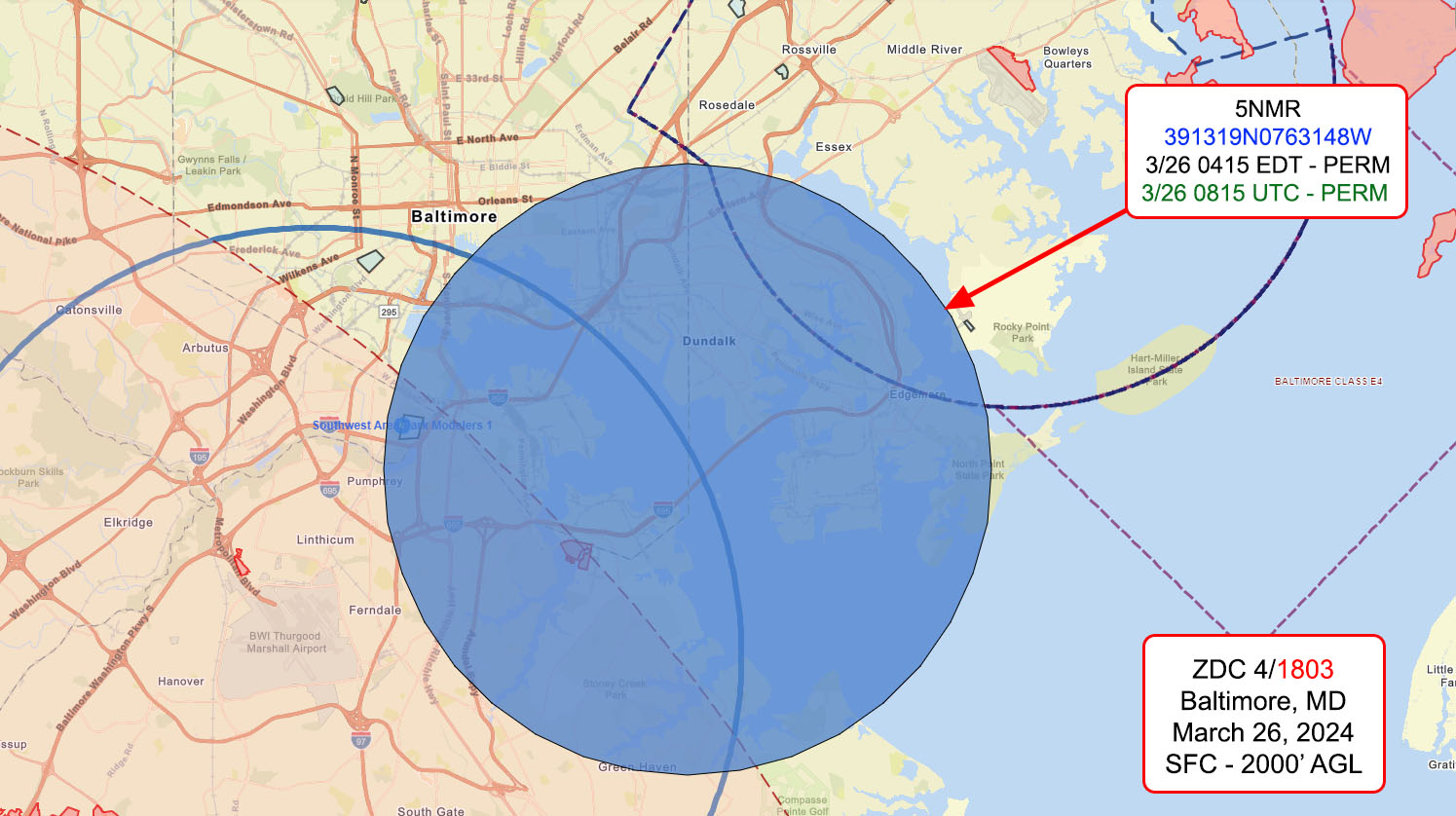
Reminder to anyone tempted to capture a few aerial shots of rescue efforts around Baltimore’s collapsed Francis Scott Key Bridge: Don’t even think about it. The no-flight ban on UAVs announced in the hours after the tragedy is still firmly in place.
The drone prohibition declared last week by the Federal Aviation Administration (FAA) still holds, as searches for the remains of maintenance workers caught in the collapse continue. Technicians are also studying the best way for freeing the cargo ship that struck the bridge from the wreckage. The no-flight ban similarly applies to other kinds of aircraft that risk interfering with other aerial operations – mainly helicopters – assisting with recovery efforts.
The FAA no-flight order restricts drones and other craft from taking off within a three nautical mile radius from the Baltimore bridge’s central span, from ground or water level up to altitudes of 1,500 feet.
It would appear, however, that there have been enough pilots tempted to risk an outing to lead local and federal authorities to repeat reminders they’re keeping close watch for – and prepared to act against – anybody violating the ban.
“Drone operators need to know that we take seriously any incursion in the restricted airspace around the Francis Scott Key Bridge collapse,” warned US Attorney Erek L. Barron. “Such incursions threaten the safety of those involved in the investigation of the bridge collapse and the recovery of victims. We will investigate and prosecute anyone who violates the ‘no drone zone’.”
For good measure, the Federal Bureau of Investigation’s Baltimore office has also said it is on the lookout for drone pilots contravening the no-flight ban around the bridge, and will press charges against anyone caught doing so.
“The FBI’s message is simple: All drones are to stay away from the site of the Francis Scott Key Bridge collapse,” said William J. DelBagno, Special Agent in Charge of the FBI’s Baltimore field office. “This is to ensure the safety of all first responders and crews in the area as well as to not interfere with their work. You will be charged federally if you fly a drone in a restricted area. It is harmful to the recovery operations, and it is illegal.”
FTC: We use income earning auto affiliate links. More.




Comments